Excerpted with commentary from our Range-of-Motion Testing charts. See examples of shoulder and rotator cuff pain that these tests help evaluate. See also our sampler of cervical tests from the charts and typical neck and head pain patterns coming from muscles and fascia. All these tests and more are available as a set of two wallcharts for office or dojo. Order here.
Rotator Cuff and Shoulder Girdle Tests
The following tests reveal muscle problems that may underlie shoulder pain and dysfunction. Always get appropriate medical attention and tests. (For rotator cuff tears, a sonograms for major tears, but not small ones; an MRI best detail.) But always check muscles.
A "frozen shoulder" resulting from adhesive capsulitis can be less painful and more rigid than a shoulder restricted by myofascial TrPs [trigger points]. TrPs in rotator cuff muscles, especially subscapularis, can mimic adhesive capsulitis symptoms. On the other hand, it is not unusual for both conditions to coexist; both need appropriate treatment.
For extensive information on differential diagnosis of shoulder and rotator cuff problems see Travell, J. G. and Simons, D. G. (1999),Myofascial Pain and Dysfunction-- The Trigger Point Manual, Vol. 1. Available from www.Amazon.com and www.lww.com
Mouth Wraparound Test
Infraspinatus
Middle Deltoid Subscapularis Posterior Deltoid SupraspinatusTeres Major Latissimus Dorsi Levator Scapula Splenius Cervicis Teres Minor Coracobrachialis 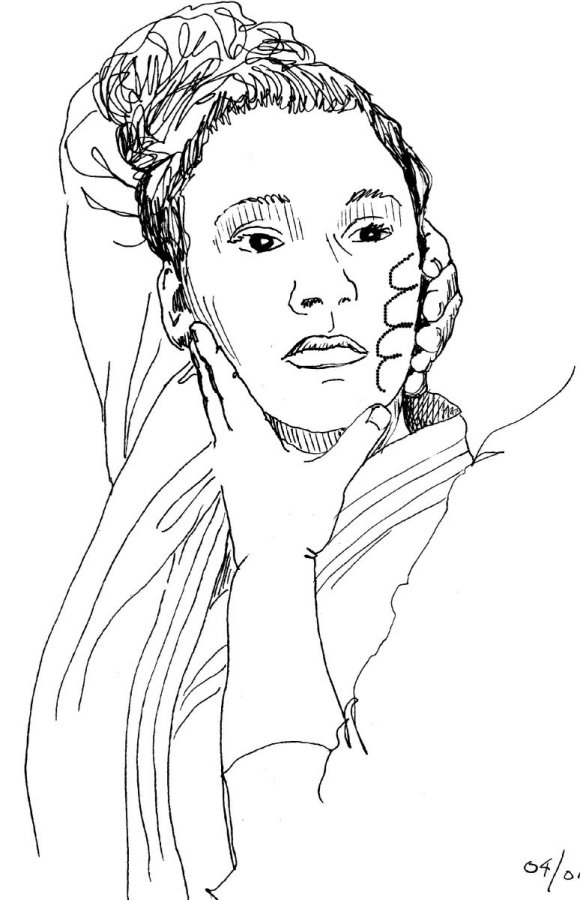 |
This is the single most important test for shoulder girdle dysfunction. Combine with Backrub Test, below.
B. Restriction: Primarily middle deltoid/infraspinatus with other possible involvement.If patient is:
|
Backrub Test
Coracobrachialis
Anterior Deltoid 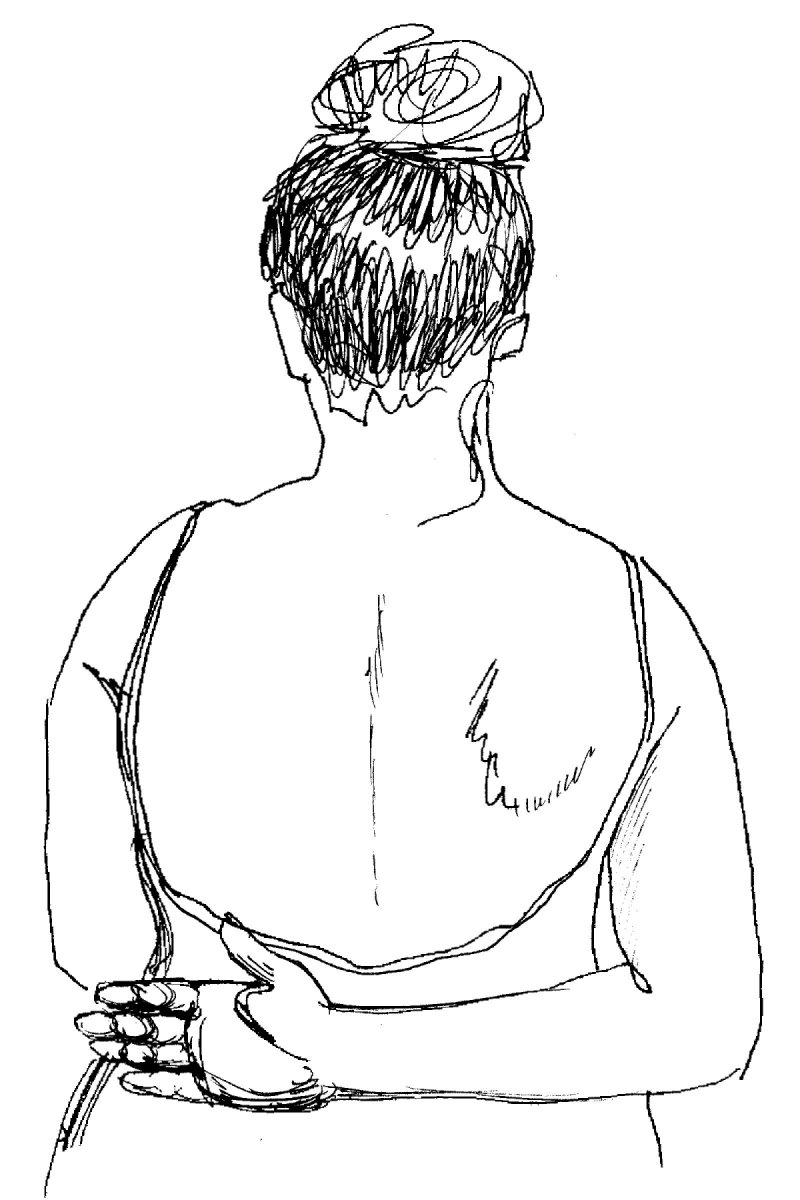 |
B. Restriction: Knuckles reach only to midline. Restriction rare in persons of normal weight.
|
| Hand to Shoulder Blade Test
Infraspinatus
Anterior Deltoid Supraspinatus Subscapularis Supinator Pectoralis Major Latissimus Dorsi Teres Minor 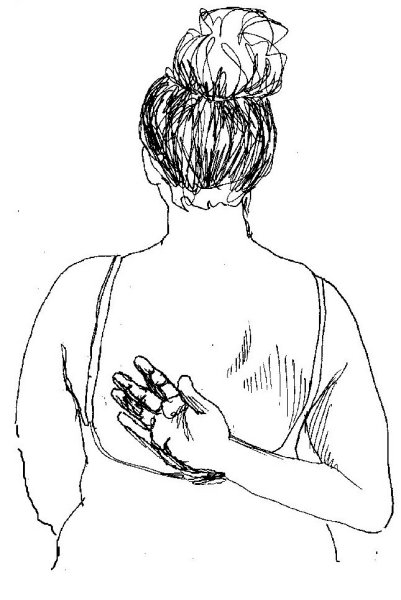 |
Substitution: Bending wrist to reach higher up back. A. No restriction: Fingertips reach spine of scapula. B. Restriction: Fingertips cannot reach spine of scapula. If patient:
|
| Overhead Reach Test
Triceps
Teres Major Latissimus Dorsi 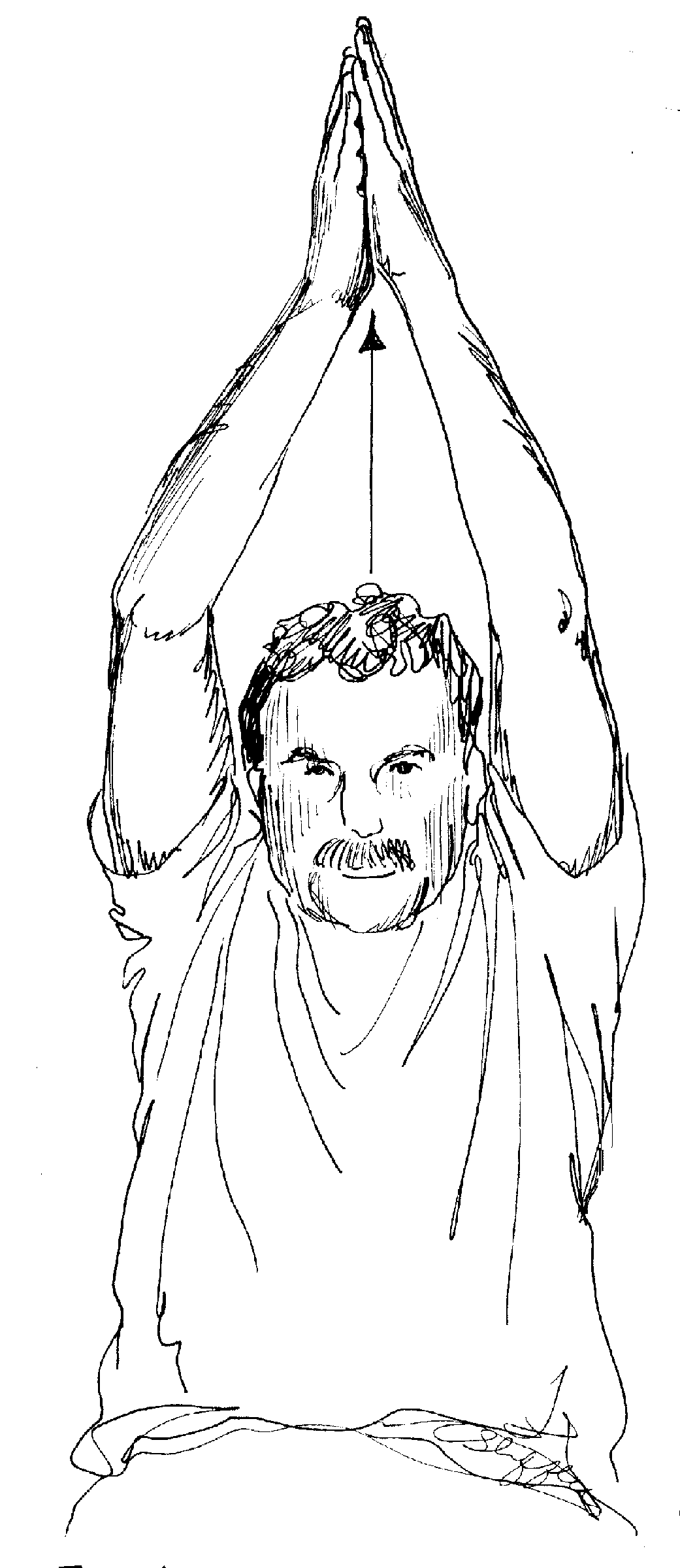 |
Substitution: Tilting arms away from short side to equalize reach.
A. No restriction: Can touch ears with insides of arms, arms reach same height, fingertips aligned.
B. Restriction:
|
| Over Shoulder Reach
Triceps
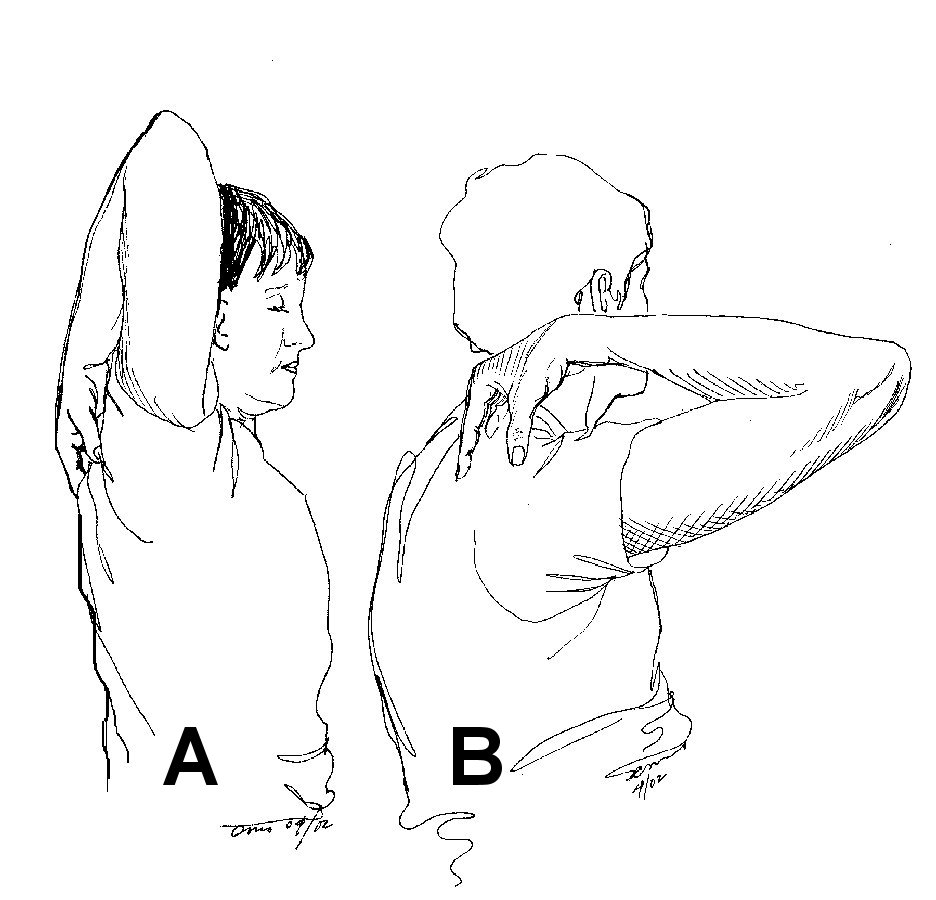 |
Substitution: Dropping head forward to bring ear forward of arm. Shifting arm out to side to relieve tightness in triceps. Keep arm and elbow perpendicular to body.
A. No restriction: Elbow vertical or beyond ear.
B. Restriction: Cannot point elbow to ceiling.
Note: The photo from which this sketch was made was not a staged shot. It shows actual Before & After treatment range of motion. Compare active pre-treatment triceps trigger points (B) with improved range of motion immediately after treatment (A).
|
Комментариев нет:
Отправить комментарий